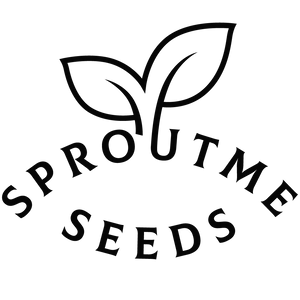Cress Curled
Cress Curled, also known as garden cress, is a fast-growing, peppery herb that adds a flavorful punch to salads, sandwiches, and soups. Its quick growth makes it an excellent choice for gardeners looking for a fast turnaround and a fresh addition to their dishes.
Preparing for Growing:
- Selecting a planting location: Choose a location with partial shade to full sun.
- Soil preparation: Prepare well-draining soil rich in organic matter.
- Purchasing or preparing containers/pots: If growing in containers, ensure they have drainage holes.
Starting from Seeds Indoors:
- Seed preparation: Cress seeds require no special preparation.
- Choosing suitable pots/containers: Use shallow trays or pots filled with seed-starting mix.
- Sowing and caring for seeds indoors: Scatter seeds evenly over the soil surface and press them lightly into the soil. Keep the soil consistently moist and provide adequate light for germination.
- Transplanting to larger containers if necessary: Once seedlings develop true leaves, thin them out or transplant them to larger containers to prevent overcrowding.
Starting from Seeds Outdoors:
- Soil preparation: Loosen the soil to a depth of 6-8 inches and remove any weeds or debris.
- Selecting appropriate timing and method for outdoor sowing: Directly sow cress seeds outdoors after the last frost date in your area, spacing them about 1 inch apart.
- Caring for seeds outdoors: Keep the soil consistently moist until seeds germinate, which usually takes 7-14 days.
Growing in Containers/Pots:
- Selecting suitable plants for containers: Cress is well-suited for container growth due to its shallow root system.
- Container and soil preparation: Choose shallow containers with good drainage and fill them with potting mix.
- Sowing or transplanting plants into containers: Sow seeds or transplant seedlings into containers, ensuring they are planted at the same depth as they were in their original containers.
- Caring for container plants: Place containers in a location with partial shade to full sun and water regularly to keep the soil consistently moist.
Transplanting to Garden:
- Soil and planting site preparation: Choose a location with well-draining soil and partial shade to full sun.
- Correct timing and method for transplanting: Transplant seedlings outdoors after the last frost date, spacing them about 6 inches apart.
- Post-transplant care: Water newly transplanted seedlings deeply and provide shade for a few days to help them acclimate to outdoor conditions.
Plant Care:
- Watering: Keep the soil consistently moist, especially during hot weather.
- Fertilizing: Cress generally does not require fertilization if grown in fertile soil.
- Weeding: Keep the area around cress plants free of weeds to reduce competition for nutrients and water.
- Pest and disease management: Cress is relatively pest and disease-resistant but may occasionally be affected by aphids or fungal diseases. Monitor plants regularly and treat any issues promptly.
Harvesting:
- Determining when plants are ready for harvest: Harvest cress leaves when they reach a height of 2-3 inches.
- Harvesting and storage guidelines: Use scissors to cut the leaves just above the soil level. Cress is best used fresh but can be stored in the refrigerator for a few days.
When to Start from Seeds by USDA Plant Hardiness Zones:
- Start cress seeds indoors 4-6 weeks before the last frost date in your area, or sow them outdoors after the danger of frost has passed.
Fast Facts:
- Planting depth: Scatter seeds over the soil surface and lightly press them into the soil.
- Seed spacing: Space seeds about 1 inch apart.
- Plant spacing: Space transplanted seedlings about 6 inches apart.
- Number of seeds per pot/container: Sow seeds densely and thin out seedlings as they grow.
- Water preferences: Cress prefers consistently moist soil.
- Sun preferences: Partial shade to full sun.
- Soil type and other important factors: Well-draining soil rich in organic matter.
- Companion Planting: Plant cress near tomatoes, lettuce, or radishes to attract beneficial insects.
- Temperature Preference: Cress prefers cooler temperatures and may bolt in hot weather.
- Days to Germination: Cress seeds typically germinate in 7-14 days.
- Days to Harvest: Harvest cress leaves when they reach a height of 2-3 inches.







